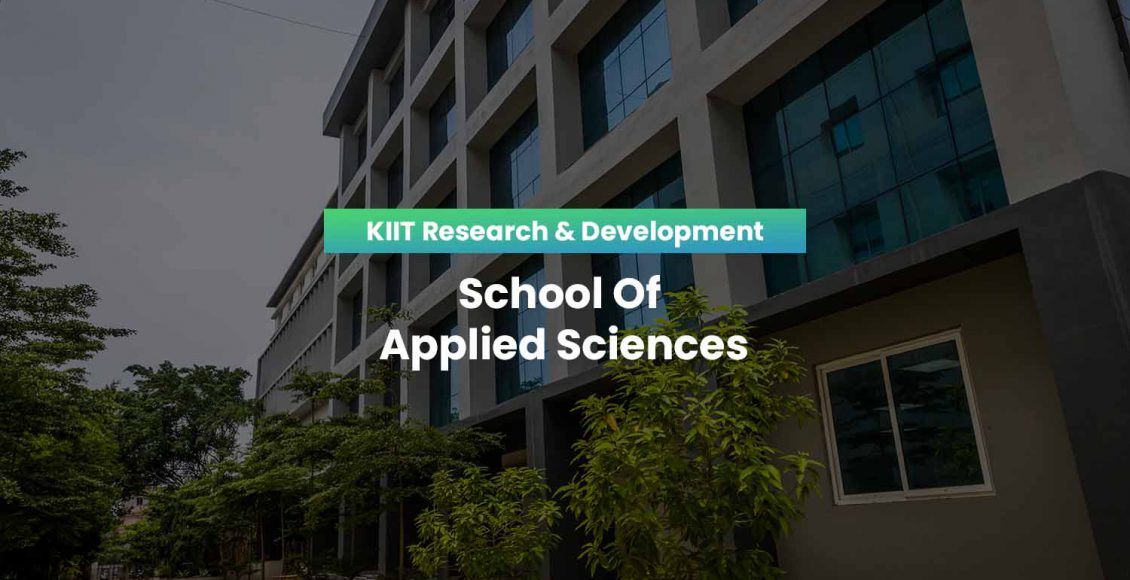School of Applied Sciences (Jun – Jul 2022)
Journal Papers
1. Kalra, S., Kumar, S., Mahala, B.K., Routray, A., and Singh, R. P. (2022), Assessment of WRF-3DVAR data assimilation on simulation of heavy rainfall events associated with monsoon depressions over Bay of Bengal. Meteorology and Atmospheric Physics, 134, 68. https://doi.org/10.1007/s00703-022-00892-8
Abstract
The study examines the performance of the Advance Research Weather Research and Forecasting model with three-dimensional variational data assimilation (WRF-3DVAR) associated with four heavy rainfall events in the presence of monsoon depressions (MDs) over the Bay of Bengal. We have conducted two numerical experiments, control experiment (CNTL) and 3DV (assimilation of observations from Global Telecommunication system). The resultant high-resolution analysis obtained from the successful insertion of additional observations through 3DVAR assimilation technique recaptures the better convection and synoptic features associated with the MDs. The 3DV-simulated values of hydrometeors (rainwater, cloud water, and ice + snow + graupel) are reasonably well captured, compared to CNTL simulation.
3. Ijumulana J. Ligate F., Irunde R., Bhattacharya P., Ahmad A., Tomašek I., Maity J.P., Mtalo F. (2022), Spatial variability of the sources and distribution of fluoride in groundwater of the Sanya alluvial plain aquifers in northern Tanzania. Science of the Total Environment, 810, 152153, 1-15. (IF: 10.753). https://doi.org/10.1016/j.scitotenv.2021.152153
Abstract:
In Tanzania, the elevated fluoride (F−) concentration and related chronic fluorosis associated with drinking F− rich water are common in East African Rift Valley regions. Study exhibited the Debris-avalanche deposits dynamics trigger the widespread of fluoride in groundwater. Depth-to-groundwater enhances the variability of fluoride in volcanic aquifers. Safe-groundwater for drinking purposes exists at steep slopes of stratovolcanoes. Deep fractured aquifers are potential sources of fluoride safe water. Irrigation enhances the variability of fluoride in shallow aquifers. In Tanzania’s context, the findings can improve the current process of drilling-permits by authority and guide the local-borehole-drillers for safe-drinking water.
4. Roy, J., Samal, A.C., Maity, J.P., Bhattacharya, P., Mallick, A. and Santra, S.C., 2022. Distribution of heavy metals in the sediments of Hooghly, Jalangi and Churni River in the regions of Murshidabad and Nadia districts of West Bengal, India. International Journal of Experimental Research and Review, 27, 59-68. https://doi.org/10.52756/ijerr.2022.v27.007
Abstract:
Study focused on the metal contents in sediments in three rivers (Hooghly, Churni and Jalangi) of Nadia and Murshidabad districts (West Bengal, India). The major physicochemical parameters along with concentrations of six heavy metals (Cr/Cu/As/Ni/Zn/Pb) in river sediments were analyzed. The area-specific, certain heavy metal concentrations were observed to be significantly high, which may have adversely affected the concerned aquatic ecosystem. Among the three studied rivers, the Churni river was found to be highly contaminated with heavy metals. It has been identified that the main sources of these heavy metals are municipal sewage and runoff from agricultural fields.
Conference Papers
1. Sahoo, A.K., and Gupta, A.K. (2022), New Analytical Exact Solutions of Time Fractional (2+1)-Dimensional Calogero–Bogoyavlenskii–Schiff (CBS) Equations, Applied Analysis, Computation and Mathematical Modelling in Engineering, Lecture Notes in Electrical Engineering. Ray, S.S., Jafari, H., Sekhar, T.R., Kayal, S. (Eds.), Springer, Singapore, 99-108.
Abstract:
In this article, Kudryashov and modified Kudryashov techniques were implemented to acquire new exact solutions of the time fractional (2+1)-dimensional CBS equation. The solutions thus attained have been stated explicitly and graphical models have been illustrated by choosing appropriate values to the parameters to visualize the mechanism of the considered nonlinear fractional differential equation (FDE). The considered methods are very powerful and effective enough to utilize for establishing solutions of various nonlinear FDEs applied in mathematical physics.
2. Rath, C., and Nayak, A., Unsteady Free Convective Flow of a Viscous Incompressible Fluid Past an Exponentially Accelerated Porous Plate with Heat Source, In: Proceedings of the International E-Conference on Innovation and Emerging Trends in Engineering, Science and Management (ESM-2K22), Shri Ambabai Talim Sansths’s Sanjay Bhokare Group of Institutes, Miraj, India, pp. 61–77, 24th – 25th June 2022, ISBN: 978-93-91535-38-4.
Abstract The problem deals with an unsteady magneto-hydrodynamic natural convective flow of an incompressible viscous radiative fluid past an exponentially accelerated porous plate surrounded by a porous medium with suction or injection and heat source. The novelty of the study is to analyze the impact of different pertinent parameters on the flow due to the presence of heat source in the energy equation. The existence of suction/injection, radiation and heat source in the flow enhances the utility of the research as they are essential in nuclear reactors, thermal and engineering processes etc. The exact solution of the flow equations are obtained using the Laplace transform technique through Bromwich contour. The nature of the flow velocity and temperature profiles due to the impact of pertinent flow parameters are presented graphically. The coefficient of skin friction and rate of heat transfer expressions are obtained analytically, and numerical results through MATLAB are presented in tabular form for various parametric values. It is observed that the insertion of a heat source parameter in the energy equation enhances the velocity of the fluid. The accelerating parameter increases the skin friction coefficient. Nusselt number increases due to fluid suction, whereas fluid injection tends to diminish it. Heat source enhances temperature profiles.


